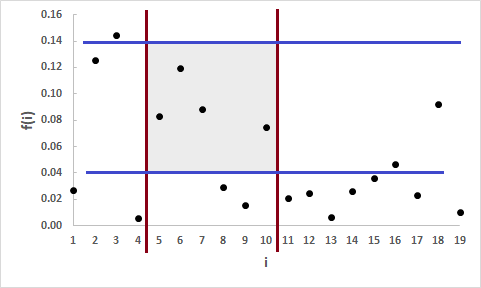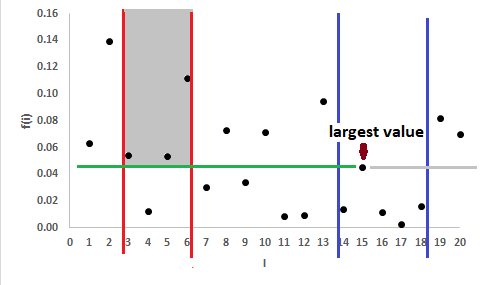Lovegrove Mathematicals
"Dedicated to making Likelinesses the entity of prime interest"
Lovegrove Mathematicals
"Dedicated to making Likelinesses the entity of prime interest"
Great Likelinesses uses two types of filter, which are -with some originality- called "Type 1" and "Type 2".
Both compare the function-values within some contiguous block with something else:
 Here, the program would count 4
Here, the program would count 4
 Here, the program would count 3
Here, the program would count 3
The user specifies how many points the program must count in order for the filter to have been passed. This is done by specifying an acceptable range. If the user specifies that 4 or 5 would be needed then a count of 3 would fail the test, causing the distribution to be rejected, but so would a count of 6.
In practice, the user will usually specify that all the points should be counted, or none of them, or at least 1.